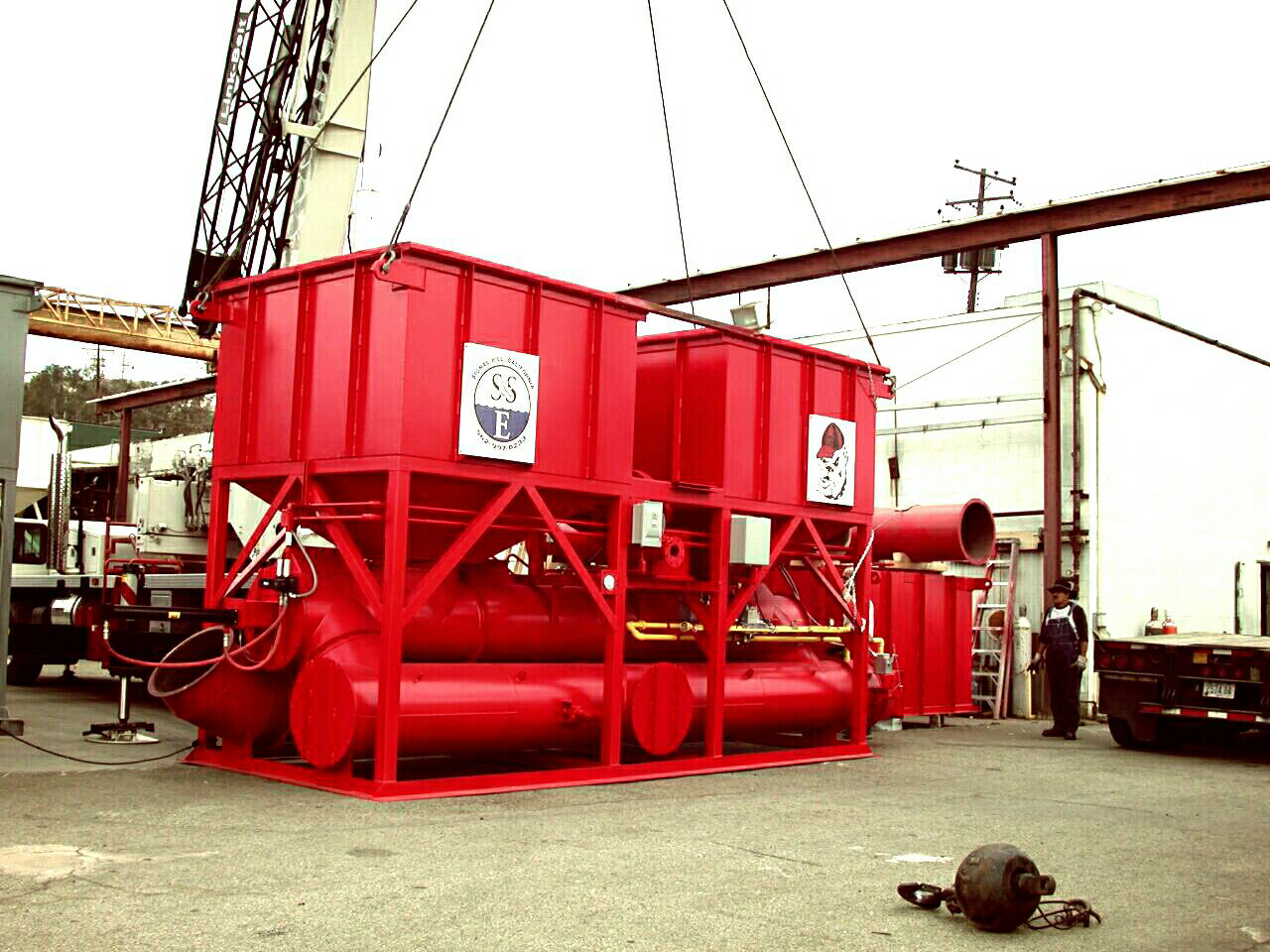
Essential Shutdown Steps to Protect Catalytic Beds
August 13, 2025 2:06 amThe Importance of Proper Shutdown Procedures: Why Catalyst Bed Protection Matters
At Ship & Shore Environmental, Inc., we understand that implementing thorough shutdown steps to protect catalytic beds is crucial for maintaining the efficiency and longevity of these essential components in various industrial processes. Catalytic beds are designed to facilitate specific chemical reactions, but they are susceptible to damage and degradation if not handled correctly during shutdowns. The importance of following proper shutdown procedures cannot be overstated; it ensures that the catalytic beds remain operational and effective, thereby safeguarding your investment and maintaining the quality of your production processes.
A Brief Overview of Catalytic Beds: Function and Vulnerability in Diverse Industrial Processes
Catalytic beds play a pivotal role in a wide range of industries, from petrochemical refining to environmental control systems. These beds consist of catalysts that accelerate chemical reactions necessary for producing desired outcomes. However, despite their robust design, catalytic beds are vulnerable to various operational hazards. Exposure to temperature fluctuations, contaminant poisoning, or mechanical wear can compromise their effectiveness. This vulnerability necessitates meticulous attention to shutdown procedures, as improper handling can lead to irreparable damage, reduced efficiency, and increased operational costs.
What Happens When Shutdown Steps are Ignorably Discounted: The Consequent Harm
Ignoring or improperly executing shutdown steps to protect catalytic beds can have severe repercussions. For instance, rapid cooling can lead to thermal shock, causing cracks or fractures within the catalytic material. Contaminants left unremoved can poison the catalyst, reducing its reactivity and lifespan. Furthermore, mechanical stresses during hasty shutdowns can lead to structural damage, further decreasing bed performance. The cumulative effect of these issues can result in frequent maintenance, unscheduled downtimes, and significant financial losses.
The Role of Shutdown Procedures in Long-term Catalyst Bed Protection: An In-depth Review
Protecting catalytic beds in industrial processes requires meticulous attention to shut down procedures. Properly executed shutdowns can significantly enhance the longevity and performance of catalytic beds, ensuring they remain effective in converting reactants into desired products. However, ignoring these critical steps can lead to degradation, contamination, and eventual failure of the catalytic beds, thereby impacting overall process efficiency and safety.
The primary role of shutdown procedures involves the controlled cessation of operations that minimizes exposure to harmful conditions. Catalytic beds are particularly sensitive to sudden changes in temperature, pressure, and chemical environment. Therefore, a well-structured shutdown plan ensures these changes occur gradually, providing a buffer against thermal shock and chemical imbalances that could permanently damage the catalyst.
Step-by-step Guide: Implementing Shutdown Procedures for Optimal Catalytic Bed Protection
Effective shutdown steps to protect catalytic beds commence with a comprehensive plan tailored to specific industrial processes. These steps should be executed by trained personnel adhering to Standard Operating Procedures (SOPs) that prioritize safety and efficiency.
Step 1: Gradual Reduction of Feedstock Flow
Initiate the shutdown by gradually decreasing the flow of feedstock into the catalytic bed. This gradual reduction helps avoid thermal and pressure shocks that could jeopardize the bed’s structural integrity. Utilize flow controllers and monitoring systems to ensure a smooth and controlled reduction.
Step 2: Stepwise Temperature Decrease
Lowering the temperature of the catalytic bed must be performed in carefully monitored stages. Implementing a stepwise temperature decrease allows for even cooling of the catalyst material, preventing hotspots or cold spots that might otherwise form due to rapid cooling. Record temperature changes at regular intervals to maintain consistency with the predetermined shutdown procedure.
Step 3: Isolation and Inertization
Once the feedstock flow and temperature are suitably reduced, isolate the catalytic bed from the rest of the process system. Subsequently, introduce an inert gas, such as nitrogen, to displace any residual reactants. Inertization is crucial to eliminate the risk of unwanted reactions that could contaminate or damage the catalytic bed during the shutdown period.
Step 4: Pressure Normalization
Normalize the pressure within the catalytic bed to ambient levels by carefully venting any excess pressure. Using smart sensors and pressure control systems, ensure the pressure is gradually reduced, maintaining the structural stability of the catalytic bed.
Step 5: Proper Sealing and Protection
Finally, seal the catalytic bed to safeguard it from external contaminants such as moisture, dust, and oxygen. Employ suitable sealing mechanisms and covers to create a controlled environment that preserves the catalyst’s activity and prevents deterioration during the idle period.
Industry Best Practices: Wisdom Tips and Standards for Effective Shutdown Steps
Adhering to industry best practices while implementing shutdown steps to protect catalytic beds ensures optimum performance and extended service life. Below are some valuable tips and standards to consider:
- Regular Training: Ensure that personnel are well-trained in specific shutdown procedures and understand the technical nuances of the catalytic beds in use.
- Using Automation: Employ automated systems for better control and precision in managing temperature, pressure, and flow rates during shutdowns.
- Regular Maintenance: Periodic inspection and maintenance of control systems and instruments used in shutdown procedures minimize the risk of failure.
- Documentation: Keep detailed records of each shutdown process to troubleshoot any potential issues and improve future procedures.
- Emergency Protocols: Develop and communicate emergency shutdown protocols for unexpected situations to protect both the catalytic bed and surrounding infrastructure.
Incorporating these best practices can mitigate risks and enhance the overall effectiveness of shutdown procedures, ultimately leading to more reliable and sustainable industrial operations.
Did you know that improperly shutting down a process with a catalytic bed can reduce the catalyst’s lifespan by up to 50%, leading to increased costs and downtime?
The Risks of Neglect – What Can Go Wrong Without Adequate Shutdown Steps
In the fast-paced world of industrial processes, skipping or inadequately performing shutdown steps to protect catalytic beds can have catastrophic consequences. These highly sophisticated components are developed to drive efficiency and ensure optimal performance within our systems. However, their efficiency relies heavily on meticulous procedures during both operational and non-operational phases. Ignoring or mishandling shutdown steps may lead to immediate and long-term damage, significantly downgrading the catalyst’s performance. Factors like thermal shock, contamination, and structural degradation can arise, necessitating premature replacement and curtailing the equipment’s lifespan. The domino effect of such negligence can spiral into increased operational costs, compromised safety, and reduced productivity.
Greater Efficiency and Longevity: Realizing the Full Benefits of Properly Protected Catalytic Beds
Adhering properly to shutdown steps to protect catalytic beds not only safeguards the catalysts from damage but also significantly extends their operational life. A well-maintained catalytic bed operates at peak efficiency, converting pollutants with higher accuracy and sustaining optimal process conditions. This translates directly into an extended operational timeline for the catalysts, reducing the frequency of required maintenance or replacements. The economic benefits are substantial: lower capital and operational expenditure, less downtime, and prolonged periods between maintenance cycles. Furthermore, maximizing the efficiency of these catalysts also contributes to environmental compliance objectives, enhancing the overall sustainability of our operations.
Beyond Maintenance: Understanding the Role of Shutdown Steps in Sustainable Industrial Practices
In the broader scope of sustainable industrial practices, diligent execution of shutdown steps transcends basic maintenance. By ensuring that our catalytic beds are adequately protected, we are not just preserving equipment but also investing in the long-term efficiency and sustainability of our operations. Good shutdown protocols can help minimize energy consumption and reduce waste, directly supporting our environmental goals. Additionally, these practices reinforce our commitment to operational excellence and regulatory compliance, bolstering our reputation as responsible stewards of industrial advancement.
Ship & Shore Environmental, Inc. offers comprehensive aftermarket services to assist our clients in mastering these crucial shutdown procedures. By imparting industry best practices and leveraging our expertise, we help enhance the reliability and durability of catalytic beds, ensuring they remain productive assets in our industrial ecosystem.
FAQ
What are the potential risks of skipping shutdown procedures for catalytic beds?
Skipping shutdown procedures can lead to detrimental effects such as thermal shock, contamination, and structural damage to the catalytic beds. Consequently, this neglect can escalate operational costs, compromise safety, and diminish overall productivity, due to premature catalyst replacement and extended downtimes.
How do appropriate shutdown procedures enhance the longevity of catalytic beds?
Appropriate shutdown procedures ensure that catalytic beds are spared from abrupt temperature changes and harmful contaminants. This meticulous approach fosters optimal performance, prolongs the catalyst’s life, and contributes to significant cost savings by extending periods between maintenance and reducing the need for replacements.
What best practices should industries follow during shutdown to protect the catalyst?
Industries should adhere to a step-by-step guide that includes gradually decreasing temperature and pressure, ensuring the elimination of harmful substances before the shutdown, and a systematic inspection protocol post-shutdown. Following such industry best practices minimizes the risk of catalyst damage.
Can proper shutdown practices affect the sustainability of industrial operations?
Yes, proper shutdown practices play a crucial role in sustainable industrial operations. By protecting the integrity of catalytic systems, industries can minimize energy consumption, reduce emissions, and comply with environmental regulations, thereby reinforcing their commitment to eco-friendly industrial practices.
What services does Ship & Shore Environmental, Inc. offer to support optimal shutdown procedures?
Ship & Shore Environmental, Inc. offers a suite of aftermarket services designed to support our clients with implementing optimal shutdown procedures. Our services extend to imparting industry best practices, providing thorough inspections, and offering guidance on catalyst maintenance that ensures their utmost efficiency and longevity.
Categorised in: Blog

